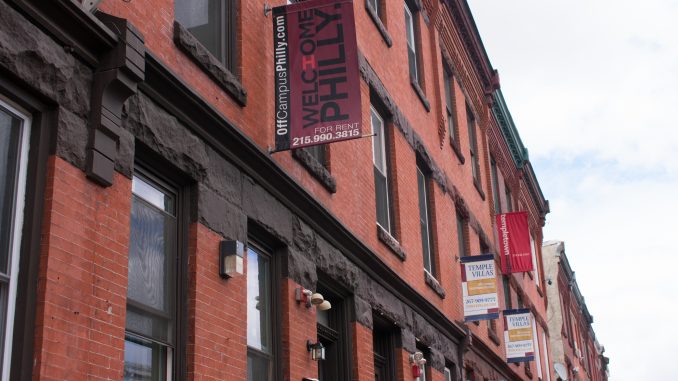
Jane Swinney Wilson has lived on Diamond Street for the past 28 years. She said the street now looks drastically different than it did when she moved in.
Today, Wilson, 63, can see real estate and housing advertisements nailed to the homes — a practice that is illegal but often goes unregulated.
Diamond between Carlisle and Van Pelt streets is part of a historical district in the city, and the Historic Preservation Ordinance, written in 2012, prevents developers and property owners from interfering with the aesthetic of the historic district. This means putting up realtors’ signs without approval could violate the ordinance.

According to the ordinance, a developer must obtain a permit from the Department of Licenses and Inspections in order to build or restore a building in a historic district. After the permit is granted, all work done that alters a building must “conform to the requirements” of that permit. The commission considers the “historical, architectural or aesthetic significance” of a building and a developer’s proposed alterations.
According to the Historical Commission’s website, “the Historical Commission has jurisdiction over the entire exterior envelopes of buildings, their sites and all site [attachments].”
“The real estate signs on Diamond Street and everywhere else are likely not approved by the Historical Commission or permitted by Licenses and Inspections,” said Ajeenah Amir, the deputy communications director for the Mayor’s office. “There are just too many of them.”
“There are elements of that building that you might not find today,” Amir added. “Those elements might need to be protected.”
Amir said the crux of the problem is a lack of resources.
“It is a law,” Amir said. “It’s on the books, but laws have to be enforced.” She added that without sufficient funding, this law is difficult to regulate.
Amir said the Historical Commission would likely need more funding to be able to enforce the ordinance.
Wilson, who currently lives on Diamond Street near 17th, said her block has fewer advertisements than other blocks of the street.
“It just creates havoc when you look up and down Diamond Street and see all of these different advertisements,” she said.
Wilson added that she contacted the Historic Commission, landlords and management companies about the signs. She plans to contact the Pennsylvania State Real Estate Commission in order to get these signs taken off the homes on Diamond Street.
Judith Robinson, the Democratic chairperson of the 32nd ward, said the signs on Diamond Street became “overwhelming” when more students started living off campus.
The signs staying up “says ‘this is a place where you can do things illegally and not have the laws enforced,’” Robinson said, adding that it implies residents “don’t care.”
“But that’s not true,” she said.
She added that these signs could possibly deter “average citizens” from living in this area because he or she may think that the homes are only for students.
“It’s sort of like a quiet way of saying, ‘Here is for students, and here is for other people,’” she said.
Ultimately, Wilson wants the signs gone from her neighborhood.
“For me, all this says is that this is just for Temple students, not for the people in the neighborhood,” Wilson said. “I would like to say to the developers, ‘Do you want all of that stuff in your neighborhood? Do you want all these signs or flags in your neighborhood?’”
Kelly Brennan can be reached at kelly.brennan@temple.edu or on Twitter @_kellybrennan.


Be the first to comment